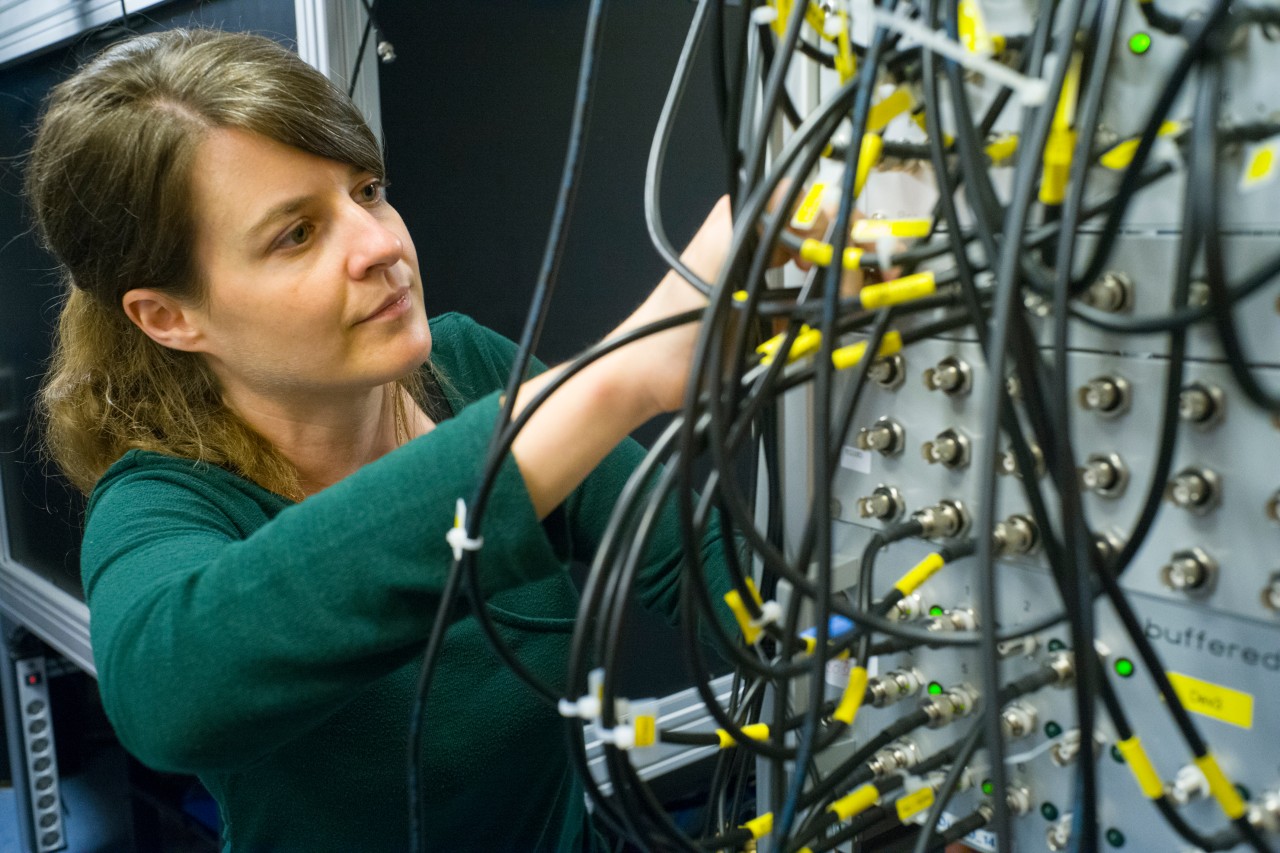Monika Aidelsburger - LMU München
1. Briefly describe your current position/project, research focus, and your role within MCQST.
I am a tenure-track professor at the chair of Experimental Physics - Quantum Optics at LMU. My group is working on quantum simulation experiments with ultracold atoms in optical lattices. Within MCQST, I am also co-coordinator of RU-G - Explorative Directions. As part of this research area my group is developing novel techniques for quantum simulation of lattice gauge theories.
 © Kraemer/Krupp Stiftung
© Kraemer/Krupp Stiftung 2. What do you find most fascinating about your research?
In our experiments we control and manipulate quantum systems of few thousand particles at the level of individual atoms. We use laser beams to cool the atoms in a room-temperature ultra-high vacuum system to temperatures as low as a few microkelvin. At these low energies atoms can be trapped in potentials made of light, which allows us to arrange them in regular arrays. This artificial quantum system made of atoms in light crystals can be used to simulate fundamental properties of condensed matter systems. What I find most fascinating about our work is that we can explore quantum many-body physics directly in the lab by observing and controlling individual atoms.
What I find most fascinating about our work is that we can explore quantum many-body physics directly in the lab by observing and controlling individual atoms.
3. What is your role in the Munich Quantum Valley (MQV)?
I am one of the PIs in the MQV initiative working on the development of neutral-atom arrays for applications in quantum computing. Specifically, we are exploring qubit-implementations based on the nuclear spin of ytterbium, which is particularly promising for the storage of quantum information, due to its robustness against external perturbations. What I find extremely interesting about this research direction is the connection between potential applications and fundamental science. The unique properties of ytterbium not only offer new opportunities for quantum computation, but also for quantum simulation and precision measurements based on the ultra-narrow optical clock transition.